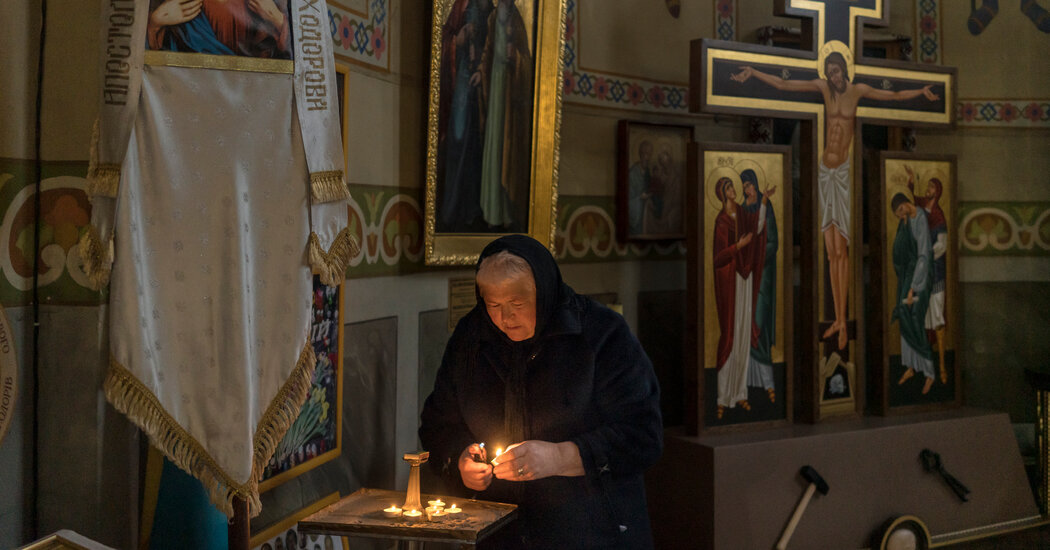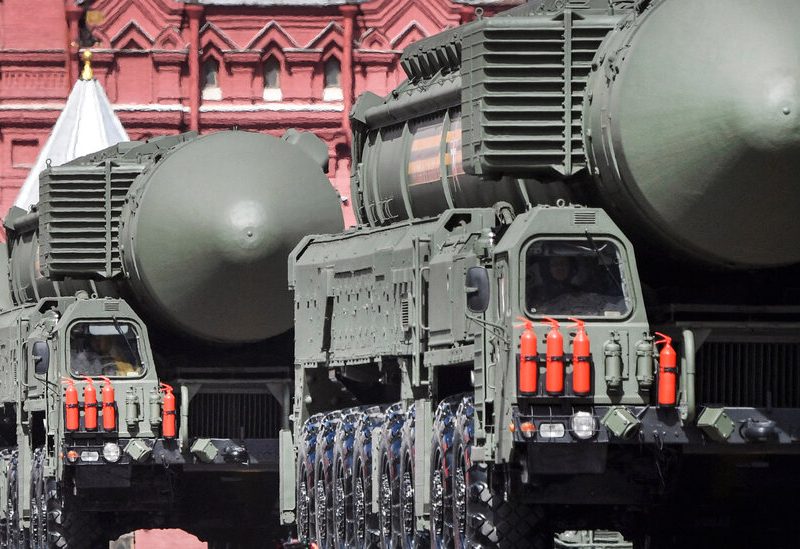It was sunset when Maj. Kyrylo Vyshyvany of the Ukrainian army stepped into the yard of his childhood home in Duliby, a village in western Ukraine, just after his younger brother, also a soldier, had been buried. Their mother was still crying in the living room.
“I can already see that she’ll be coming to visit him every day,” he said that day.
He was right, but he would not be by her side. A few days after the funeral, in March 2022, he was killed in a Russian missile strike on a Ukrainian military base and buried next to his brother, Vasyl.
The Vyshyvany brothers were the first deaths from Duliby and the surrounding community after Russia began its full-scale invasion on Feb. 24, 2022. Since then, 44 more Ukrainian soldiers from the area have been killed — more than four times the local death toll from the previous eight years of fighting Russian-backed separatists in the east.
For Duliby and its surrounding enclave of Khodoriv — total population around 24,000 people — waiting for the next solemn death notification and the funeral that follows has become a bitter routine. But even as the town meets and buries the fallen with modest ceremony, some neighbors are quietly weighing the price they are willing to pay for a war with no end in sight.
Divisions have started to form between residents agnostic about the war — often those whose family members have dodged the draft or fled the country — and those who have loved ones on the front line or who fully support the war effort.
In the earliest days of the war, before the news of the first combat deaths arrived, people in communities across Ukraine flocked to draft offices. Among them was Khodoriv, whose families have a long history of fighting for Ukraine’s independence and being executed or sent into exile during violent Soviet repressions of its nationalist movement in the last century.
In Duliby, the Russian invasion hit home early with the deaths of the Vyshyvany brothers. Suddenly, residents were burying soldiers whom most had known as lifelong neighbors.
“No one knew then how to do everything correctly,” said Natalia Bodnar, 41, the older sister of the Vyshyvany brothers. She arranged both her brothers’ funerals, she said, and even wrote the speeches for the priest.
As the war has ground on, the Khodoriv government has taken over the logistics of organizing funerals, and, inevitably, somber repetition has helped smooth the process. Public services have been moved to a central square, each time gathering crowds of people.
“Now everyone knows what kind of coffins, standards and what the procedure is,” Ms. Bodnar said from her apartment in Khodoriv last month.
Last fall, the deaths of locals mounted, and residents sought a visible commemoration of loss to go beyond the daily church services that drew dozens of faithful. So new memorial plaques of rock and bronze were hung on the outer walls of schools the killed soldiers had attended.
At those schools, people also honored the fallen with memorials of flowers and candles. But some parents complained that the offerings were too grim to look at and should be removed, said Olha Melnyk, 46, the head of the social services department in the Khodoriv administration. They were opposed to having their children reminded of the war happening hundreds of miles to the east.
Still, the makeshift altars have stayed put, and when the school the Vyshyvany brothers attended was renamed after them last fall, no one objected.
By 2023, the lines at draft offices across the country slowly disappeared as most volunteers had already gone to the front. New recruits were mostly summoned by draft notices given out in waves, based on the army’s needs, to men aged 27 to 60.
But gradually, the military has increased efforts to recruit soldiers, with some draft offices forcibly taking people from the streets to speed up the process. In the past six months, that tactic — widely known as forced mobilization — has frequently made headlines in Ukraine, symptomatic of the chronic troop shortage, which culminated this month in the government’s decision to lower the draft age in Ukraine to 25.
About 600 people from the Khodoriv community were serving in the army as of March, local authorities said, including over a dozen men from Duliby itself, some of whom were drafted from the streets. Men have since begun to avoid staying out during daylight, residents said.
“Everyone is afraid. No one wants to die,” said Bohdan, a school employee who declined to provide his surname for the fear of repercussions from the Ukrainian authorities.
Petro Panat, the leader of the territorial defense unit, an ad hoc military unit formed in the early days of the war to protect local communities, said 10 out of 30 men from the unit had since obtained documents to legally exempt them from fighting. The exemptions are granted for reasons like health problems or relatives in need of care.
Anna Kukharaska, 66, who runs a volunteer group that collects donations to aid soldiers at the front, said, “There are lots of indifferent people.”
In the Khodoriv area, relatives of soldiers who are fighting or who have died at the front said that in the last two years they have begun to resent men in the community who are said to have bought their way out of service while their own sons and fathers are fighting — a feeling that may be shared by many across the country as the Ukrainian government wrestles with how to mobilize up to 500,000 more troops.
“Sometimes people want to devalue the sacrifice of such families to justify themselves buying their sons out,” said Marta Hladii, 51, a therapist from nearby Stryi who works with the military and their families for free. Of the five mothers spoken to by Ms. Hladii who had lost their only sons to the war, she said two were criticized by neighbors for not bribing their way out of the military to protect them.
There is no legal way to pay for an exemption from military service in Ukraine, but there have been widespread reports of corruption in draft offices, with bribes ranging from $1,000 early in the war — “a buyout from death” — to as much as the $10,000 per head price that was revealed in a Kyiv draft center. Some of the most prominent draft-related scandals caused the government to fire top military enlistment officers last August.
One of the most recent soldiers to be buried in Khodoriv showed up to the fight willingly.
As a child growing up in Khodoriv, a 9-year-old Nazar Yankevych attended the funeral of a local activist, Roman Tochyn, who was shot in the head during Ukraine’s Maidan revolution, the protests in 2014 that renounced pervasive Russian influence on Ukraine.
“After that funeral, he told our mom, ‘When I grow up, I’ll go to war,’” said his sister Maria Yankevych.
Her brother had been accepted to a technology training program just before Russia invaded but instead went to a military training camp, she said, and joined an elite assault unit.
Mr. Yankevych was 19 when he died in combat in February outside the eastern Ukrainian city of Avdiivka. The shrapnel piece that killed him left a mark on his temple, the same place as the bullet that hit his hero 10 years earlier.
“A lot of young guys from all over Ukraine wrote to me,” his sister said, after she posted about him on Instagram. They wrote: “‘Your brother is a hero to me, I want to be like him.’”



